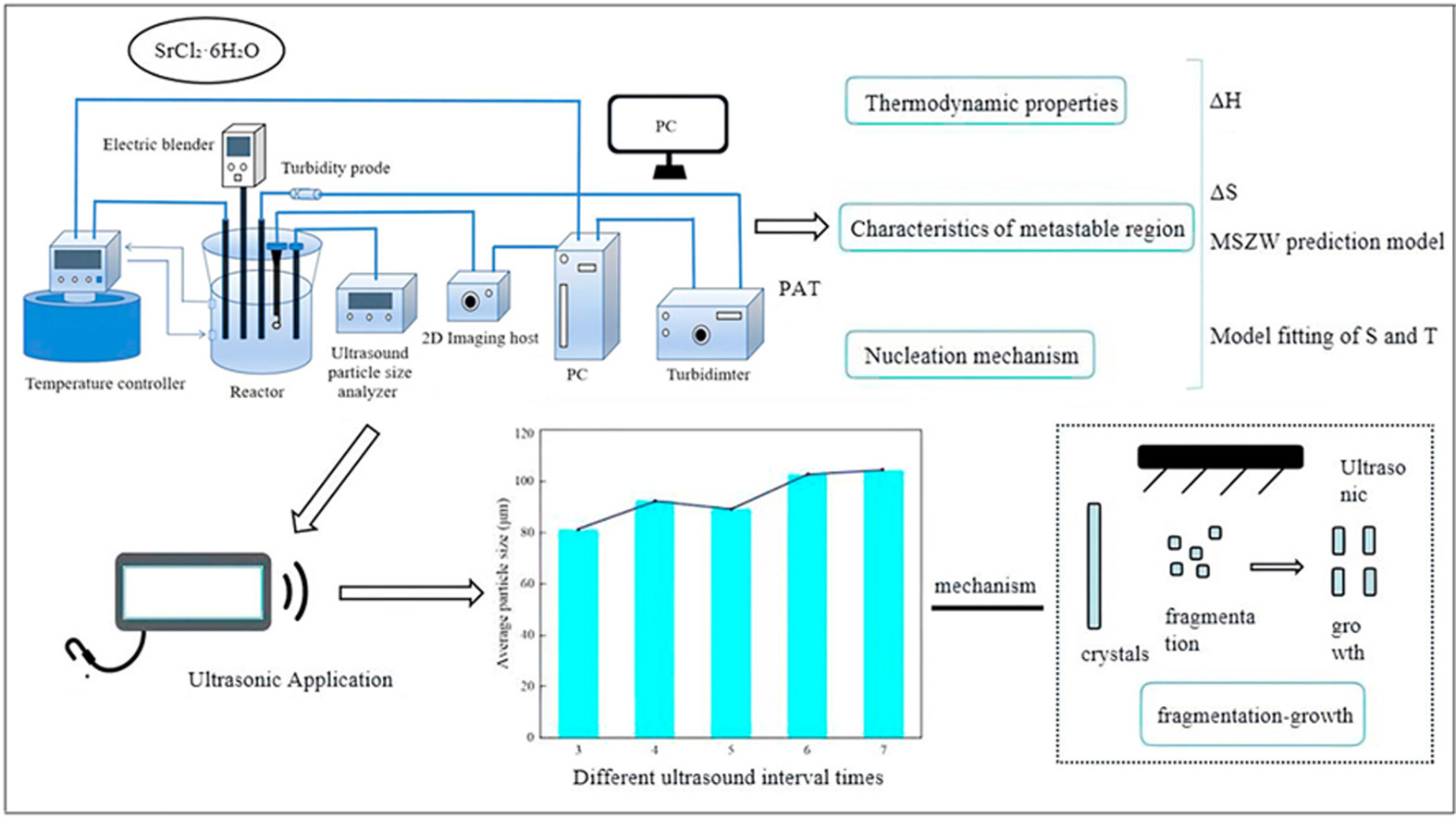• Thermodynamic parameters of crystallization were derived and calculated through model fitting.
• A kinetic metastable zone prediction model was established based on nucleation theory.
• Anti-Caking performance of SrCl2·6H2O particles was significantly enhanced.
• This work provides a theoretical guidance for practical applications through crystallization theory.
Crystallization remains a fundamental separation and purification technique in chemical manufacturing. A comprehensive understanding of aqueous solution thermodynamics, metastable zone width (MSZW), and nucleation mechanisms is essential for optimizing crystallization processes, defining operational control parameters, and enabling subsequent crystal morphology control. This study systematically investigates the crystallization behavior of SrCl2·6H2O through in situ monitoring using process analytical technology (PAT). Key parameters, including MSZW, thermodynamic properties (solubility, supersaturation), and nucleation kinetics, were quantitatively determined to develop a predictive process model. To address the critical industrial challenge of product agglomeration arising from poor particle morphology, which complicates storage, transportation, and downstream processing while compromising product quality and increasing operational costs, an ultrasonic regulation strategy was implemented under optimized crystallization conditions. Post-treatment with optimized ultrasonic parameters yielded a marked reduction in particle aspect ratio, substantial improvement in dispersion, and a clear morphological transition from rod-like to granular crystals. This transformation significantly enhanced anti-agglomeration performance, thereby increasing product value. The regulatory mechanism of ultrasound is attributed to the "fragmentation-growth" mechanism, where ultrasonic cavitation induces controlled particle fragmentation followed by directional growth.

